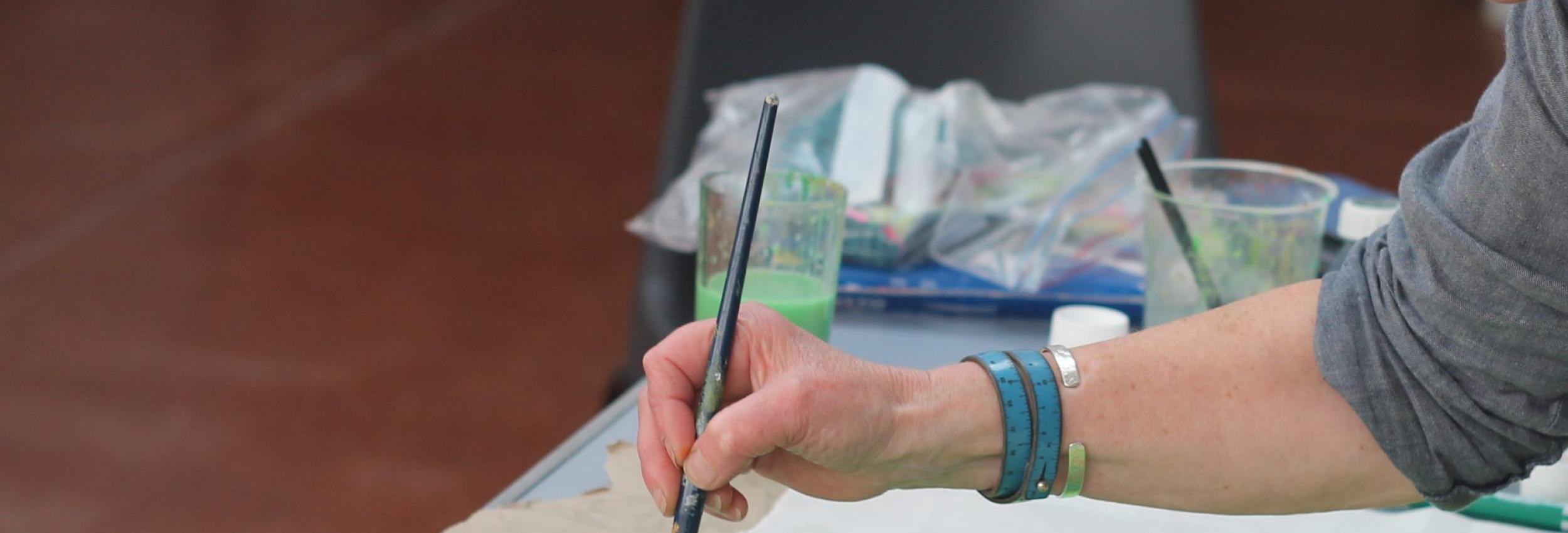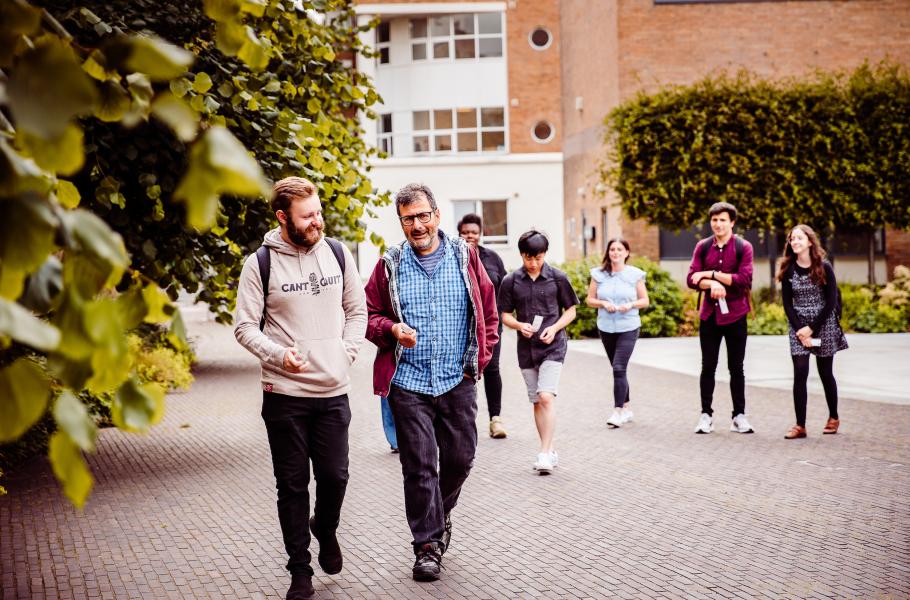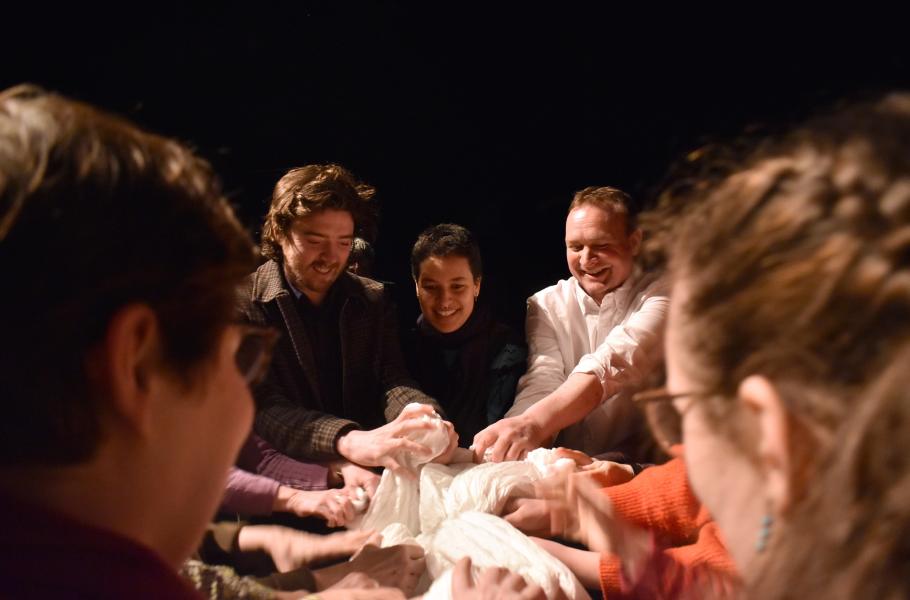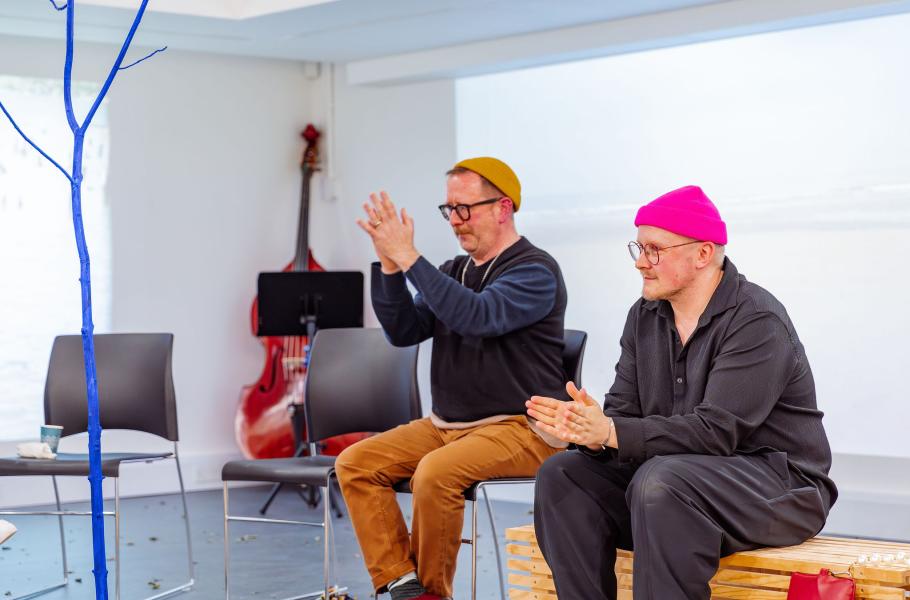Sewing it all together: River Tours
Conversations with Sewing Café Lancaster while preparing the textile for River Tours
Sewing Café Lancaster is a grassroots project that advocates for an ethical textile industry and regenerative textile practices. Right now Sewing Café Lancaster is working on the textile map of the Lune river valley. It’s part of River Tours, a collaboration with Stan’s Café theatre company and Lancaster Arts: textile maps of rivers combined with guided tours that tell stories about those rivers.
Stan's Cafe's aspiration is to build up a library of maps representing rivers from around the world along with their stories. The Thames and The Volga are already in the library – and now it’s time for The Lune to join them in a performance and installation that will take place on Saturday 15 October near the river itself.
As the Bridges Producer with Lancaster Arts, I joined Sewing Café for a few sessions and talked with them about the environment, art, textile and The River Lune. Here are some of the insights from the conversations with Katrina Barnish, Carol Gittins, Gina Frausin, Enda O'Regan and Sian Bowes from the Sewing Café Lancaster.
Book your free tickets to River Tours here.
***
– Sewing Café started around ten years ago with mending sessions and clothes swaps, but it’s about much more than just sewing. It’s about an ethical way of looking at what you wear and what you use, it’s about having the awareness of the impact of your clothes on the environment, and it’s about exploring a more sustainable way to deal with clothes. “Café” means that it’s open for people to just come and join our activities.
The mending sessions are a chance for people to get together. They exchange advice, skills or sewing materials or learn to mend or sew if they have never had the opportunity to do that – and also talk about the environmental issues connected to textiles. We became more and more involved with the activism side of sewing. We made banners to promote our messages, and then other people found it useful to commission us to make banners – like Black History Lancaster.
– As more people joined, they brought their interests as well: natural dye, plant growing, exploring sustainable techniques. But the underlying principle is always “Buy less, care more”. For example, charity shops don’t really solve the problem, because they just give people an excuse to carry on with consuming. Natural dyeing and the upcycle approach to making things takes you a very, very long time, which is good, because you are engaged at every stage.
It takes weeks of gathering plants, soaking the fabric and so on. But in the end it’s more valuable, because you know the journey of it. It forces you into a slow life, as you have to carefully plan each stage: when you put a thing in a bucket, when you give it a stir, when you take it out. You are as much involved in the process as in the finished result.
– Natural dyeing is a real challenge because it’s just so easy to reach for the chemical, but instead you prepare the ground, research the plants, tend to the plants, and explore new techniques, trying to push the boundaries of how you can dye in the best way possible. It’s bringing together art and science. It’s about connecting to the things you care about rather than being abstract. You have to really work on yourself as a person, learn that certain things take time and accept the unpredictability of the process – that’s the bit of magic.
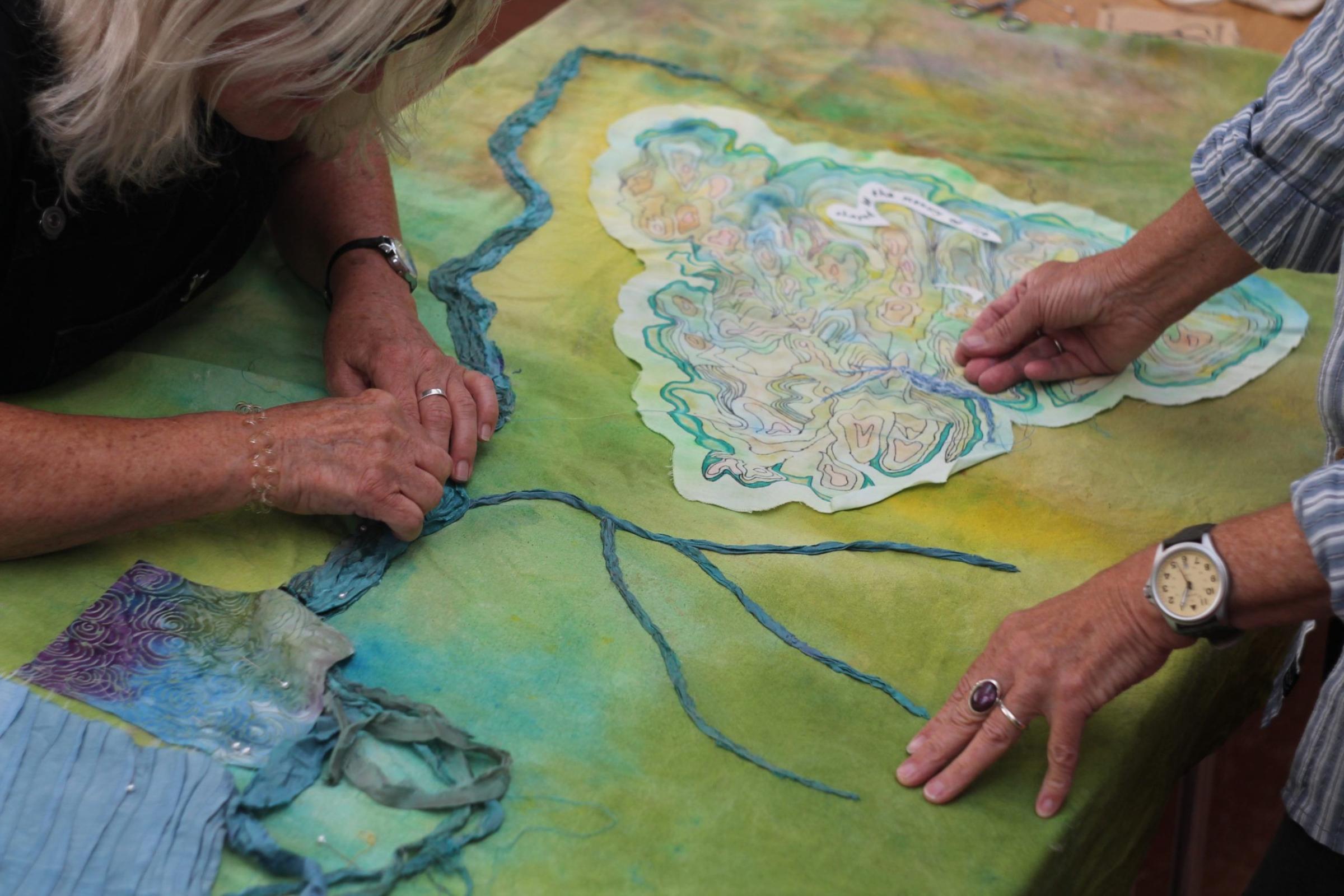
– River Tours is a very exciting project for us, because it’s a landscape that we really care about. All of us are very familiar with the river. We all know bits about it, and bringing that knowledge together is special. It’s an opportunity to think about the river in a way that we haven’t done before: how the whole river grows, what contributes to its growing, where the streams come from.
We found out about many environmental issues, like the massive pollution problem. Your respect for the river grows as your knowledge grows. The river and the people, the sheer history of it, in which we are just passing by, makes you realise its majesty and its scale.
– We started by looking at the maps of the area and really scrutinising the features of the landscape. The shape of the river was a challenge and we had to find a way to fit it into a presentable artwork. This was an interesting process. Then we had to decide which are the important features.
Working alongside the writer, Claire Dean, gave us an amazing list of the historical features, stories, people and wildlife around the river. From that list, we worked out who was interested in what, and what aspects each of us could sew. Most of the textiles we are using are repurposed – for example, old curtain lining and all sorts of scraps left from other projects. We also used a variety of techniques: applique, traditional embroidery stitches, quilting, weaving.
– We were really inspired by maps, and a lot of features that we use are in the style of maps. The end result should be like a large illustrated textile map of The Lune. It’s representing the land on the textile. It’s a good reminder that the soil that feeds us is also the soil that dresses us. People often forget that. They are aware of the connections between soil and food, but not soil and textile. Realising that gives you a sense of connection.
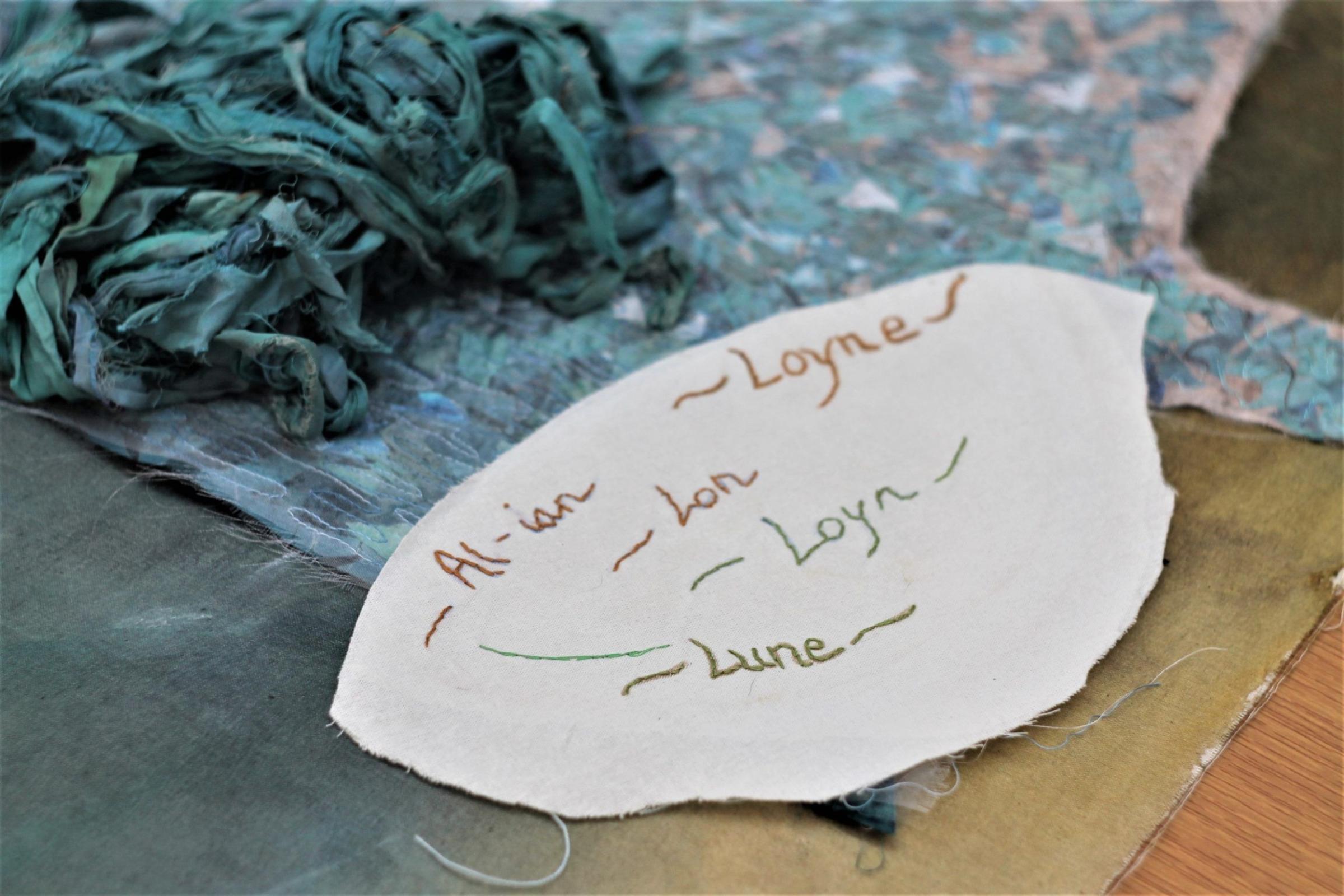
***
These sewing sessions and the conversations that have accompanied them have reminded me of my own family history. My great-great-grandmother was making textiles from scratch: from growing flax to the actual cloth. I know her only from my grandmother’s stories, but I can touch a greyish small towel that she made and that we still have.
I think of traditional Belarusian ornaments that were embroidered on clothes, towels and napkins: ancient symbols in red thread on a white cloth, the most beautiful thing in the world to me. I think how weaving and sewing have always been a way for women to get together and create meaningful connections. Amazing things that they created have often been regarded as mere craft, not exquisite enough to be considered as art – and I’m so glad that now we finally admit that it’s art. And a great way to tell stories as well!
So come and see the textile art and the performance on Saturday October 15, from 11.00-16.00 near Lancaster Skatepark by The Lune. Find out more and book your free tickets here.
Maria Gulina finished her Masters degree in Media and Culture at Lancaster University and is now a BRIDGES curator and producer with Lancaster Arts.

